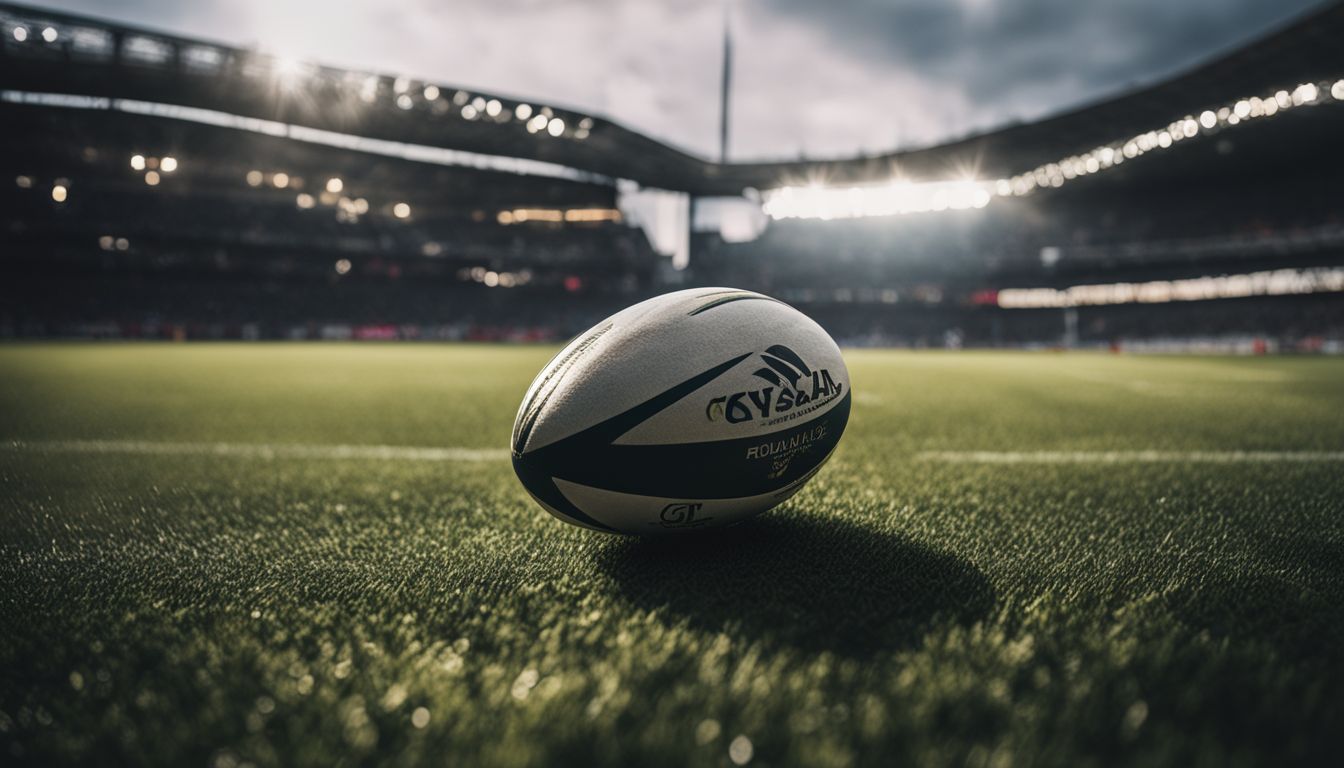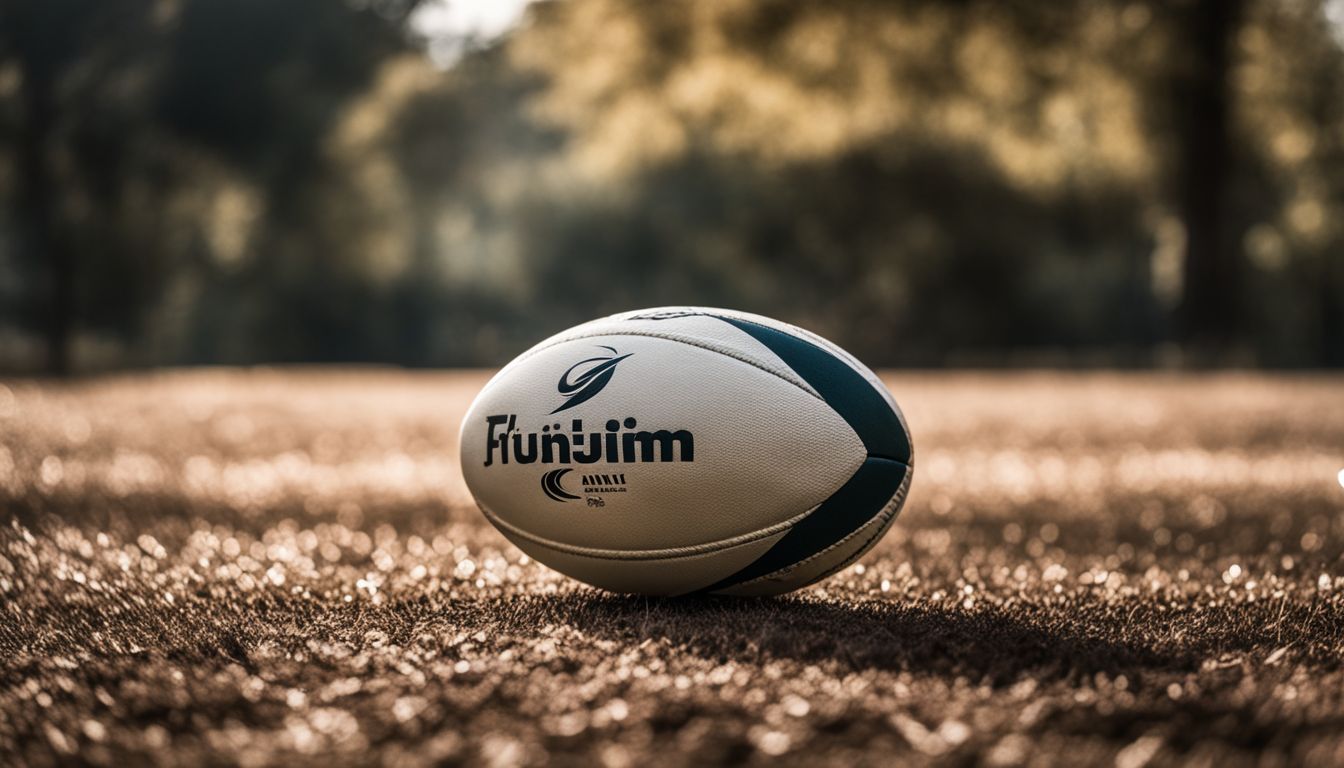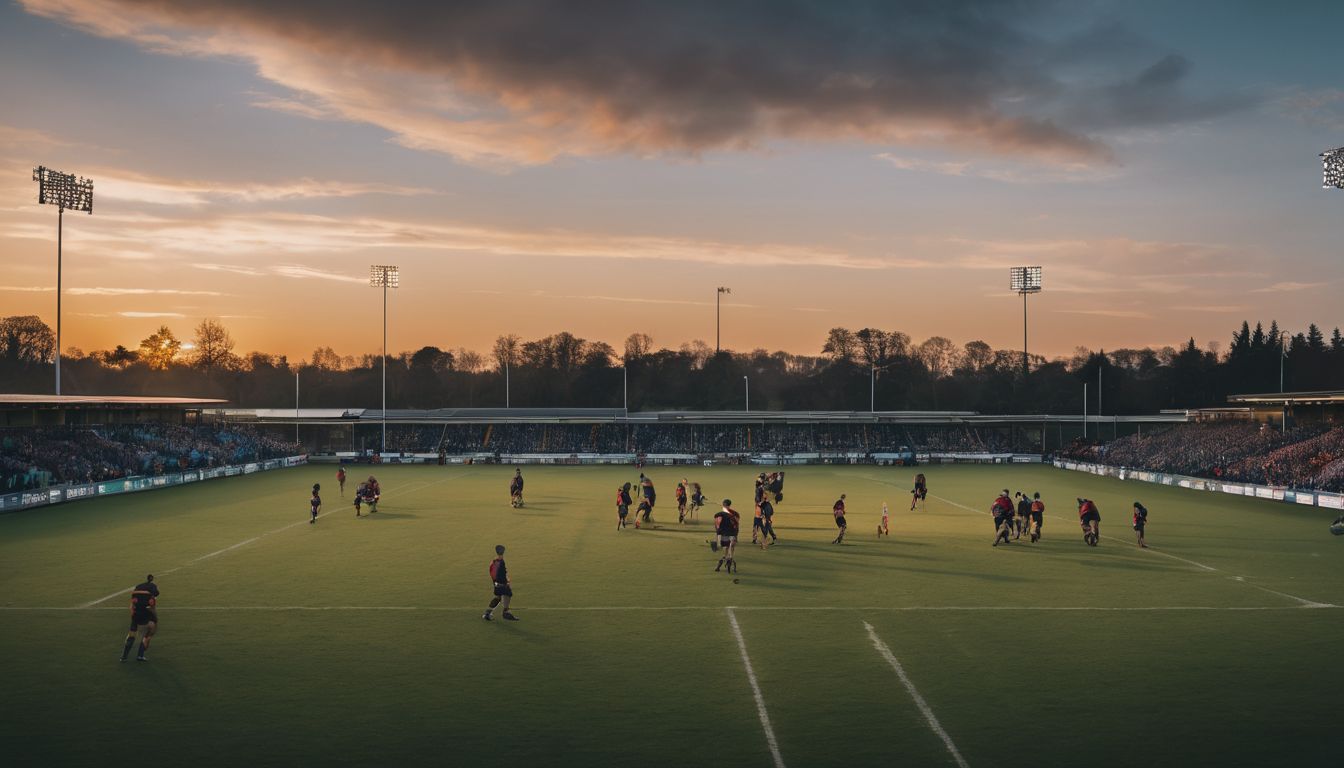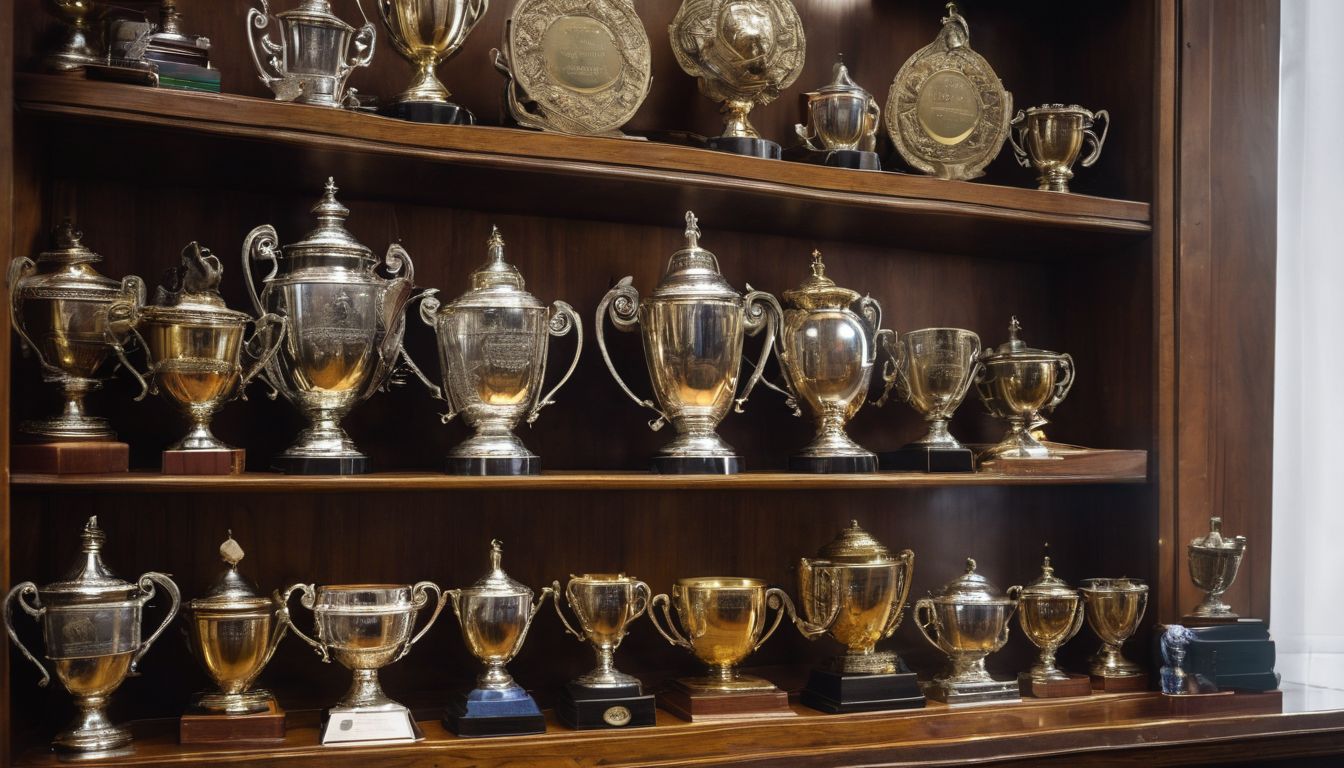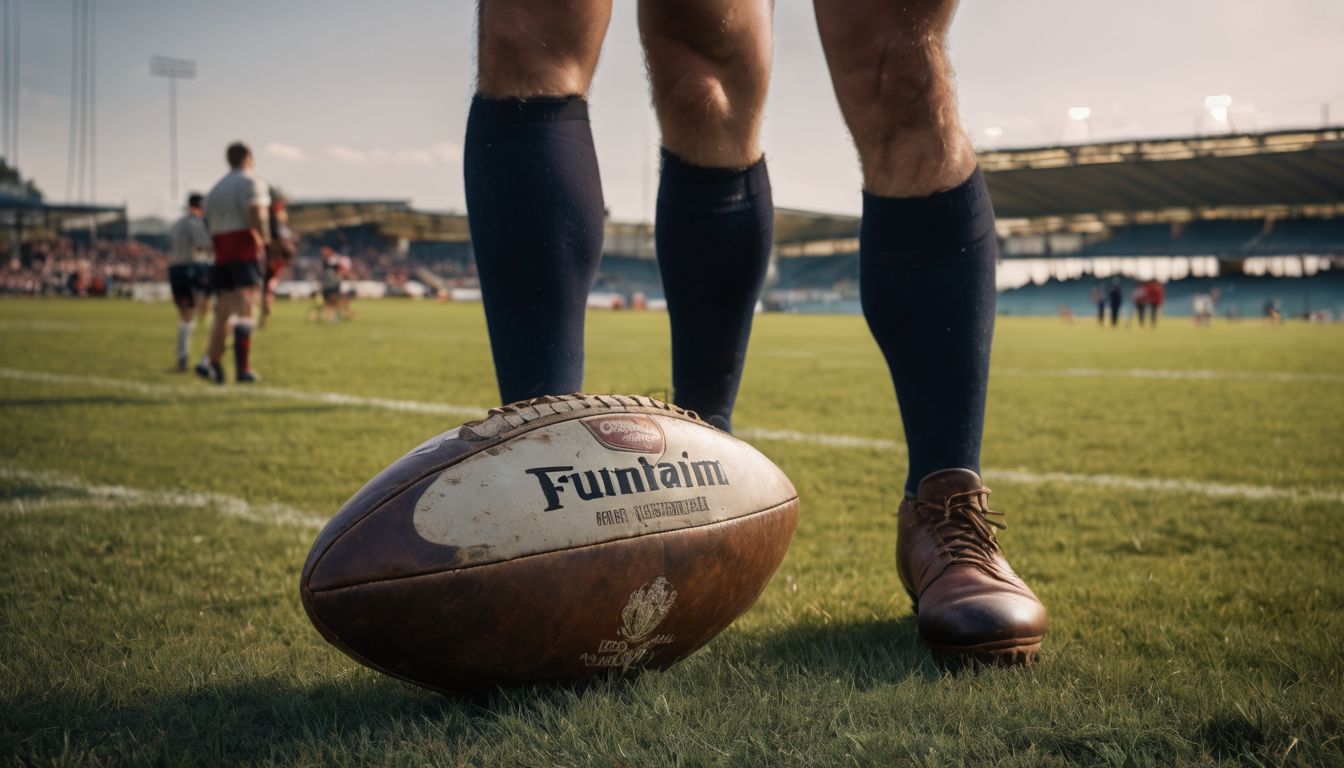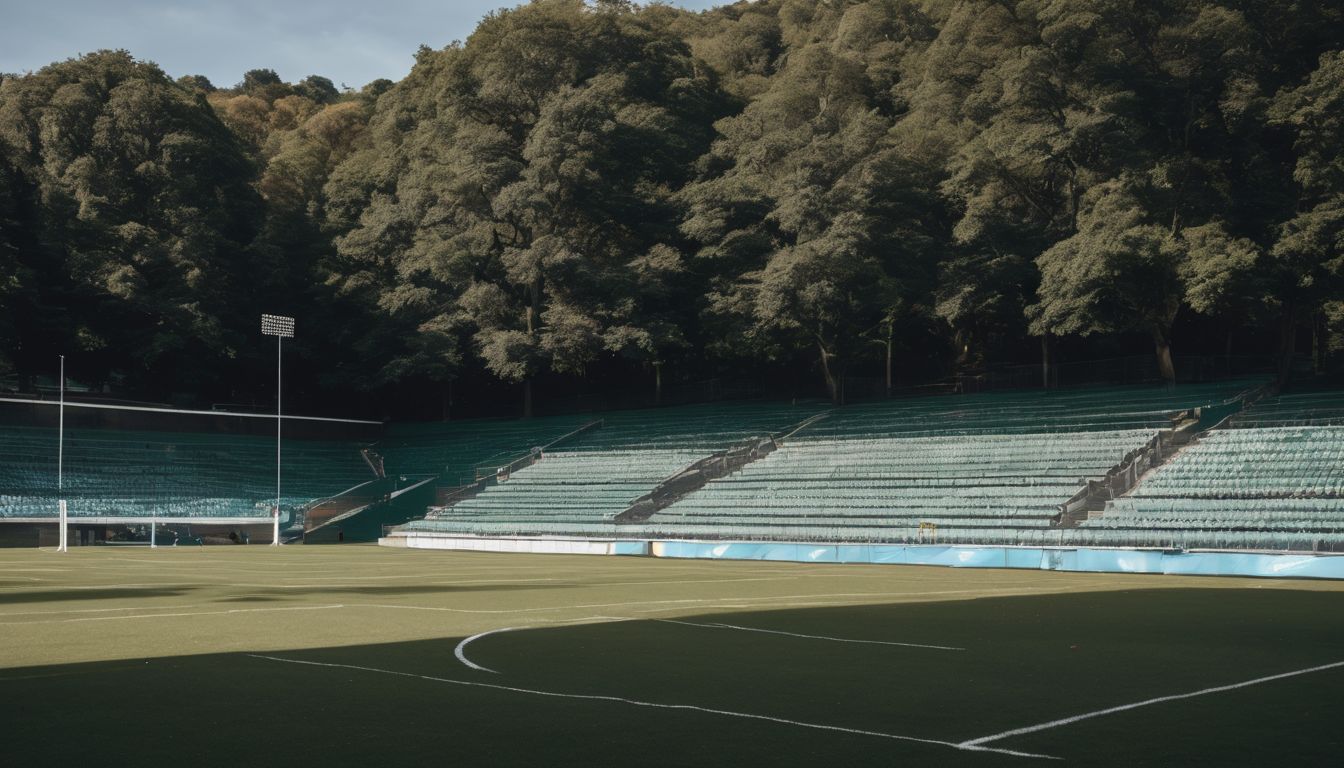In the buzz of 80 minutes on the pitch, rugby’s excitement now spills over into social media. Fans and players are closer than ever before, thanks to networks like Twitter and Instagram shaping the game we love.
Our blog will tackle how this digital arena influences rugby, from grassroots to international levels. Let’s dive in for an eye-opening journey!
Key Takeaways
- Social media has drastically expanded rugby’s reach, allowing players to connect with fans worldwide and enhance the game’s popularity. Platforms like Twitter, Instagram, and TikTok offer a mix of personal branding for athletes and direct fan engagement.
- While social media can foster community and promote positive aspects of rugby, there is also a risk of negative impacts on mental health due to pressures related to image maintenance and exposure to cyberbullying.
- Players are encouraged to use social media responsibly, sharing authentic content that reflects the true nature of their lives and the sport. This approach can help mitigate mental health risks while strengthening the bond with supporters.
- Rugby organisations utilise platforms like Facebook Live and Instagram Stories for real – time updates on games and player activities, further cementing fan loyalty through these interactive exchanges.
- The rise of TikTok among rugby players introduces creative ways to engage younger audiences, adding a fun dimension to player-fan interactions while contributing positively to growing rugby’s global fanbase.
The Relationship Between Social Media and Rugby
Social media has been instrumental in helping rugby grow by providing a platform for player recruitment and engagement with fans. However, it also raises concerns about the impact on mental health and the pressure to maintain a certain image.
How social media has helped rugby grow
Social media has turned rugby into a global conversation, drawing in fans from every corner of the earth. Platforms like Twitter and Instagram have given rugby players a voice beyond the field, allowing them to share training tips, match highlights, and personal stories.
This openly accessible content hooks new enthusiasts and keeps long-time followers engaged.
Teams use Facebook pages to update supporters on game schedules, results, and club news—this immediate sharing builds anticipation for matches and events. Players promote their own brand alongside their sport’s image by being relatable online icons; fans feel closely connected to their heroes more than ever before.
These social networking sites have been instrumental in increasing rugby’s visibility worldwide, contributing significantly to both its fan base and emerging as a professional sport with substantial commercial success.
The impact of social media on player recruitment
Social media has revolutionised player recruitment in rugby. Teams now have the opportunity to scout talent globally, expanding the pool of potential players. Online platforms allow clubs to showcase their brand and culture, attracting athletes who align with their values and playing style.
Additionally, social media provides a platform for rugby players to showcase their skills and achievements, allowing them to be discovered by teams they may not have had access to before.
Engagement with fans through social media also plays a role in player recruitment. A strong online presence can attract supporters and sponsors, making clubs more appealing destinations for prospective players.
Mental Health Concerns Among Rugby Players
The negative effects of social media on mental health in rugby players are a concern, as it can create unrealistic expectations and put pressure on maintaining a certain image. Encouraging honesty and authenticity on social media is crucial for promoting positive mental well-being within the rugby community.
Negative effects of social media on mental health
Social media can have detrimental effects on the mental health of rugby players. The pressure to maintain a certain image online can lead to anxiety and decreased self-esteem. Moreover, the potential for cyberbullying and online harassment on social platforms can negatively impact the mental well-being of players, creating additional stress and emotional strain.
It’s crucial for rugby players to be aware of these negative effects and take steps to protect their mental health while engaging with social media.
Encouraging honesty and authenticity on social media is imperative in mitigating the negative impact on rugby players’ mental health. By promoting an environment that values openness over perfection, players can feel more comfortable sharing genuine experiences and connecting with fans in a healthy manner.
The role of social media in creating unrealistic expectations
Social media contributes to creating unrealistic expectations for rugby players and fans. The pressure to maintain a certain image on platforms like Facebook and Instagram can lead to a skewed perception of reality.
Rugby players are often under scrutiny, which can perpetuate an environment of unattainable standards, impacting mental well-being and self-esteem. It’s important to promote honesty and authenticity on social media, encouraging transparency and real-life portrayals rather than perpetuating idealised images.
The portrayal of perfection on social media can create harmful misconceptions about the realities of rugby life. This not only affects individual players but also influences the broader rugby community, including aspiring athletes, by setting unattainable benchmarks for success.
Encouraging honesty and authenticity on social media
- Sharing personal stories and struggles can inspire and relate to fans, creating a deeper connection.
- Authentic posts and interactions humanise players, making them more relatable to the audience.
- Being honest about challenges and victories fosters genuine engagement with fans.
- Transparent communication on social media helps break down barriers between players and supporters.
- Displaying authenticity can influence others to be genuine online, fostering a positive community.
- Creating an open dialogue encourages mental health awareness and support among fans and players.
- Authenticity in social media content increases the appeal of rugby teams, attracting more supporters.
Staying Connected Through Social Media
Rugby players use social media to connect with their fans, sharing behind-the-scenes moments and engaging in interactive content. The rise of platforms like TikTok has also allowed players to form a stronger sense of community within the rugby world.
How players use social media to stay connected with fans
The rise of TikTok in the rugby community
Rugby players are harnessing the popularity of TikTok to connect with fans on a more personal level. From sharing behind-the-scenes footage to engaging in fun challenges, TikTok allows players to showcase their personalities, creating a sense of relatability and authenticity for fans.
The platform provides an opportunity for players to express themselves creatively and engage with a wider audience, ultimately fostering a strong community within the rugby world.
Utilising TikTok not only humanises the players but also enhances the accessibility of rugby as a sport by reaching younger demographics. As more rugby stars join TikTok and share entertaining content, they contribute to promoting the game and expanding its fanbase across different age groups.
Creating a sense of community through social media
Social media platforms like Facebook, Twitter, and Instagram have facilitated a strong sense of community within the rugby world. Players connect with fans in real-time through live chats and behind-the-scenes content, fostering a deep bond between them.
The intimate access provided by social media humanises players and allows for authentic interaction, making fans feel closer to their favourite teams and athletes. These platforms also enable rugby enthusiasts to engage with each other, sharing experiences, insights, and support for the sport they love.
The interactivity on social media builds camaraderie among fans and players alike. It offers a space where individuals can share their passion for rugby while feeling connected to a larger community of like-minded people.
The Dangers of Social Media
The pressure to maintain a certain image and the potential for cyberbullying are significant dangers of social media in rugby. To learn more about the impact of social media on rugby, keep reading.
The pressure to maintain a certain image
Rugby players face intense pressure to maintain a certain image on social media. The public eye scrutinises their every move, and the expectation to present a flawless persona can be overwhelming.
This pressure can lead to players feeling compelled to project an idealised version of themselves, contributing to increased stress and anxiety. As rugby fans, it’s important to remember the human side of these athletes behind the carefully curated posts.
The demands of maintaining a perfect image on social media can have detrimental effects on player mental health. Encouraging authenticity and understanding that rugby players are not immune to struggles is vital in fostering a supportive online community for both fans and athletes alike.
The potential for cyberbullying and online harassment
Social media can pose risks for rugby players, including the potential for cyberbullying and online harassment. It’s crucial to recognise that athletes, like anyone else, may fall victim to negative interactions on social platforms.
The high visibility of rugby players makes them susceptible to malicious comments and targeted attacks online. In managing this risk, it’s important for both players and fans to be mindful of their behavior and take measures in creating a positive and supportive environment within the digital space.
The growing influence of social media means that these dangers are ever-present. With its ability to reach wide audiences in real-time, cyberbullying has become an issue that demands attention in the realm of professional sports.
Balancing the Benefits and Dangers of Social Media
Encouraging responsible social media use and using platforms to create a positive impact on the rugby community.
To learn more about the impact of social media on rugby, keep reading!
Encouraging responsible social media use
Encouraging responsible social media use is essential for maintaining a positive image and promoting the sport of rugby:
- Players should be mindful of the content they share on social media, as it reflects their identity and affects their reputation within the rugby community.
- Practising discretion when posting on social platforms can protect players from potential cyberbullying and online harassment.
- Utilising privacy settings to control who can see their posts allows players to maintain personal boundaries while engaging with fans.
- Engaging in open and respectful communication with fans helps foster a supportive and inclusive rugby community online.
- Recognising the impact of their words and actions on social media enables players to make informed decisions that positively represent themselves and the sport.
Utilising social media for positive impact
Rugby players and teams can use social media to promote the positive values of the sport, such as teamwork, perseverance, and sportsmanship. This can be achieved by:
- Sharing behind-the-scenes glimpses of training sessions and team bonding activities to show the dedication and hard work that goes into the game.
- Using platforms like Instagram and Twitter to engage with fans in interactive Q&A sessions, sharing personal stories, and offering motivational messages to inspire others.
- Collaborating with rugby organisations and charities to raise awareness for important causes through posts, live videos, and fundraisers.
- Highlighting community outreach initiatives and events that demonstrate the rugby community’s commitment to giving back.
- Showcasing the diverse talent within the rugby world by featuring players from different backgrounds and regions, celebrating inclusivity and diversity within the sport.
Conclusion
The impact of social media on rugby is significant. It has helped the sport to grow and reach a wider audience. Despite the potential dangers, responsible use of social media can benefit both players and fans.
Encouraging honesty, authenticity, and community through social platforms is essential for the continued success of rugby.
FAQs
1. How does social media impact rugby?
Social media has a big effect on rugby by connecting fans and players, quickly spreading news and updates, and influencing public opinions about the sport.
2. Can social media change how we see rugby players?
Yes, through their posts, players can reveal more of their identity and honesty which affects how fans perceive them both on and off the pitch.
3. Does technology play a role in the relationship between rugby and social media?
Definitely! Advances in technology enhance how games are shared on social platforms, allowing for instant access to scores, discussions, and player interactions.
4. Are there any negative effects of social media on rugby?
While it brings many positives like engagement with fans, sometimes social media can put pressure on players or spread unverified information that could tarnish reputations.




